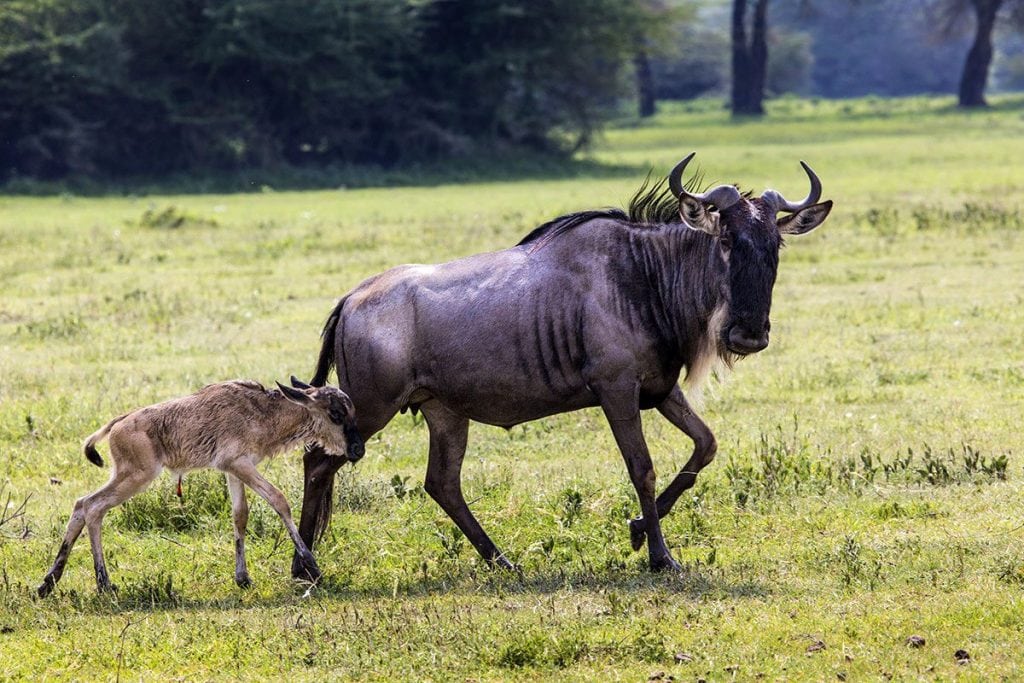The wildebeests preferred habitats are grasslands and savannas. Wildebeest are grazing herbivores that feed upon grass and succulent plants. Massive herds will migrate for hundreds of kilometres in search of fresh grass which only grows after the seasonal rainfalls.
Wildebeest move around in massive herds, some stay in the same place while others are nomadic and are in constant search for new food sources. Many have to make dangerous crossings such as the Kenya Masai Mara. Migrating wildebeest must cross 2 wide rivers where Nile Crocodiles await them. When the crocodiles spot a weak wildebeest, they block its route back to shore and start to close in on it.

Wildebeest move around in huge herds probably because there is safety in numbers. The bigger the group, the less risk an individual faces of being picked out by predators. Predators do follow the herds around and will prey up on the young and the weak.
Male wildebeest mature at 3 – 4 years and females at 2 – 3 years. When the males mature, they will set up their territories which they mark with faeces and secretions emitted from their face and hoofs. They defend it from other males and attempt to mate with females entering their areas.















